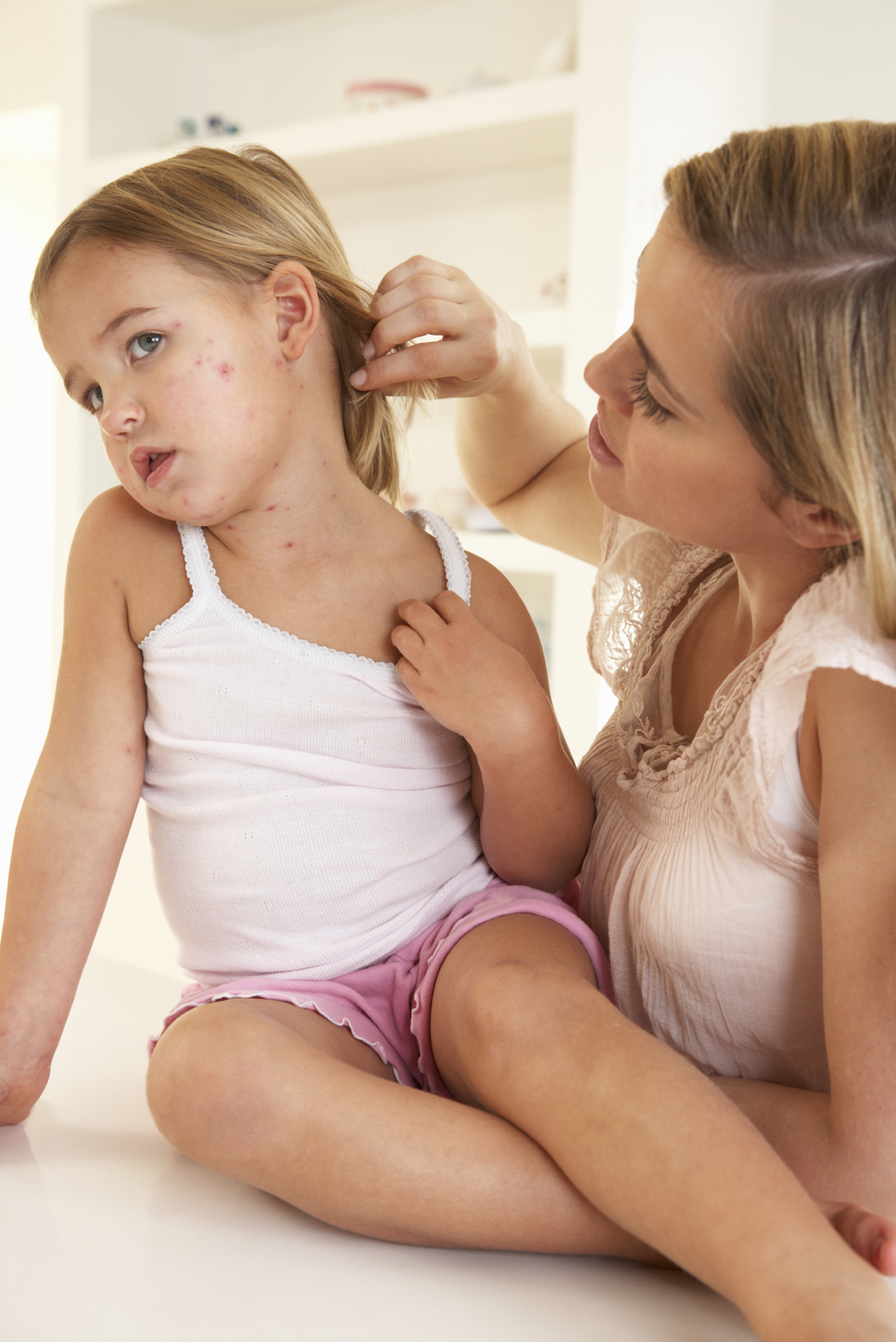Episode Transcript
Dr. Gellner: Your child really has chicken pox. Will old-fashioned home remedies work or do you need to take them to the pediatrician? That's our topic today on The Scope. I'm Dr. Cindy Gellner.
Announcer: Keep your kids healthy and happy. You are now entering The Healthy Kid Zone with Dr. Cindy Gellner on The Scope.
Dr. Gellner: So what is chicken pox? Chicken pox is a highly contagious disease caused by a virus. If your child has chicken pox then your child was exposed to the virus 14 to 16 days earlier. Symptoms of chicken pox include multiple small red bumps that become thin-walled water blisters. The classic appearance of chicken pox is what doctors describe as a dew drop on a rose petal.
Those clear water blisters become cloudy water blisters, and then they pop and they become open sores, and finally they dry out and are covered with brown crusts. This cycle all happens within the first 24 hours of this bump appearing. These bumps will crop up for four to five days and they usually start on the head, back and abdomen. They do not start on the arms and the legs. The rash will eventually spread to the arms and legs and possibly the mouth, eyelids and privates, but they start in the middle of the body.
There is usually a fever as well. The fever is usually the highest on the third or fourth day. Children start to feel better and stop having a fever once they stop getting new bumps. The average child gets a total of 500 chicken pox sores, and it may take two weeks for all the scabs to fall off.
Chicken pox rarely leaves any permanent scars unless the sores become badly infected or your child repeatedly picks off the scabs. However, normal chicken pox can leave temporary marks on the skin that can take 6 to 12 months to fade. Once a child has had chicken pox he will usually never get it again. Very rarely, a child may have a second mild attack of chicken pox.
If your child truly has chicken pox, they'll look pretty miserable. So how can you help them through this? The best treatment for skin itching is a cool or lukewarm bath every three to four hours for the first few days. Add four tablespoons of baking soda, oatmeal or cornstarch per tub of water. Don't worry. Baths don't spread the chicken pox.
Put calamine lotion on the itchy spots after the bath. If the itching becomes severe or interferes with sleep, give your child a single dose of an antihistamine. Acetaminophen may be given for a few days if your child develops a fever over 102. There is some controversy with giving ibuprofen to children with varicella but most doctors think it's now safe. Do not give your child aspirin ever. It's especially important not to give children and adolescents with chicken pox any aspirin because of the link with Reye's syndrome.
Chicken pox sores also will occur in the mouth and throat, so your child may be picky about eating. Don't worry. It's okay. Encourage your child to drink cold fluids and offer a soft bland diet, avoiding salty foods and citrus fruits.
Many parents ask about antiviral medications for their children. Antiviral medicines help only if started within 24 hours of the sores appearing, but it only slightly reduces the number of sores from 500 and may shorten the illness but only by one day. There are more risks to taking this medication than benefits, so most normal healthy children do not need them. To prevent the sores from becoming infected, be sure to trim your child's fingernails short and wash their hands with antibacterial soap frequently during the day.
Children with chicken pox are contagious five days before the rash begins and until all the sores have crusted over, which is usually about five to seven days after the rash begins. To avoid exposing other children, call your pediatrician to see if your child really needs an appointment. Usually, your child doesn't. If your pediatrician does want to see you, they will give you special instructions about how to check your child in. This is to protect all the patients in the waiting room who may not be old enough for the varicella vaccine. Once all the sores have crusted over, your child does not have to stay home anymore even though they may still have scabs. Remember, it may take two weeks for all the scabs to fall off.
Most parents who think they didn't have chicken pox as a child had a mild case. Only 4% of adults are not protected, meaning most of us have had chicken pox. If you as a parent lived in the same household with siblings who had chicken pox, consider yourself protected.
Siblings will come down with chicken pox in 14 to 16 days, and the second case in a family always has more chicken pox than the first. So if your child wakes up with spots, call your pediatrician who can help you determine if this is chicken pox or not and can help make the right call for the treatment your child needs.
Announcer: TheScopeRadio.com is University of Utah Health Sciences Radio. If you like what you heard, be sure to get our latest content by following us on Facebook. Just click on the Facebook icon at TheScopeRadio.com.
